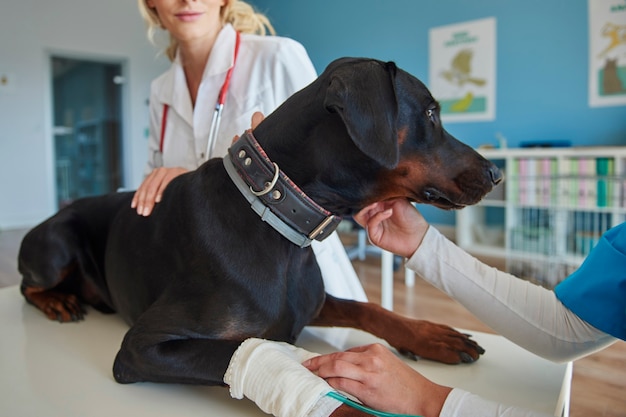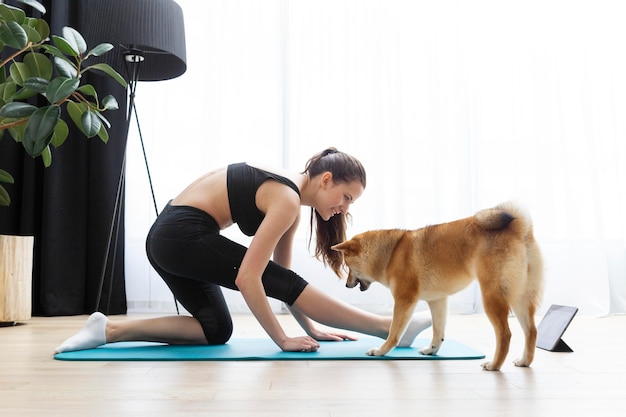The Role Of Rehabilitation In Managing Chronic Pain In Dogs


Managing Chronic Pain in Dogs with Rehab
Seeing our dogs in pain is one of the worst aspects of pet ownership. Whether from an injury, chronic disease, or old age, it is hard to see when your dog doesn't run or jump or play the way he or she used to because of pain. But chronic pain doesn't need to be a universal experience or an untreatable diagnosis.
With advances in canine rehabilitation, chronic pain can be addressed, managed, and reduced, giving our dogs longer, happier, healthier lives.
What Causes Chronic Pain In Dogs?
Just as with humans, as dogs age, their bodies decline. That could mean developing age-related conditions or an old injury rearing its ugly head. But young dogs may experience chronic pain as well. One thing to note is the difference between chronic pain and acute pain. Acute pain is new and related to a specific recent incident. If your pet broke a bone, their pain would be acute.
However, if that broken bone healed and still causes pain, that would be chronic. Acute pain is expected to reduce or heal with treatment, and chronic pain is expected to stay the same or worsen over time.
Some examples of processes that cause chronic pain in dogs are:
Osteoarthritis
Getting older leads to the deterioration of cartilage between body bones. As this cushion is reduced, your dog may have bone-on-bone pressure, which can cause pain, stiffness, tenderness, lack of flexibility, reduced range of motion in that joint, swelling, or bone spurs.
Fractures
Previous injuries, such as broken bones, may cause discomfort later in life, as these are another hot spot to develop osteoarthritis. If a bone was broken and healed without treatment, it is also possible that there are subtle misalignments that lead to chronic pain after healing is complete.
Inflammation and Allergies
It seems counter-intuitive, but skin and digestive allergies, which lead to inflammation, commonly cause chronic pain in dogs. Infections, hormonal issues, certain cancers, and autoimmune diseases can cause inflammation.
Muscle Tension
Does your dog perform the same movements repeatedly, whether at play or as part of their home life or work? He or she may develop painful muscle tension, though it can also be caused by stress or anxiety rather than physical activity.
Post-Surgical Pain
For some dogs, after surgery is completely healed, the pain lingers. This is rarely caused by the veterinarian or surgeon but may be related to how your pet's body responded to the surgery or healing process.
Diabetes
As with humans, diabetes, when left untreated, often develops into neuropathy or nerve pain. Diabetic neuropathy cannot be reversed. However, there are treatments to moderate the effects. The best course of action is to keep a close eye on your dog's weight and water intake, monitor their diet, and have your vet perform blood tests as needed to check for this and other issues.
Hypothyroidism
This hormonal imbalance leads to increased joint fluid, swelling, and inflammation, which can cause chronic pain in your pet.
Treating Chronic Pain with Rehabilitation
There are so many diseases and problems that can cause chronic pain in dogs; at the same time, many treatment avenues are open, with new ones being developed all the time. Physical rehabilitation may only come to mind after an acute injury or further diagnosis. Still, with the varied modalities, it is just as effective on chronic pain or ongoing health issues.
The concept of rehabilitation, in general, is a return to the previous level of functionality, which includes a previously tolerable level of pain (or none at all).
Different modalities will be more or less appropriate depending on the cause of your dog's chronic pain. The treatment and outcome will be specific to your pet in each case. Not every treatment is right for every pet, so working closely with a canine rehabilitation expert is crucial. Though they may teach you various treatments to perform at home, no therapy should be done without professional input first.
What follows is a description of various rehabilitative therapies for dogs, from most passive (your dog gets to lie back and enjoy) to most active (your dog is active and working).
The first type of treatment that your canine rehabilitation specialist may recommend is Massage Therapy, which is very effective when chronic pain stems from soft tissue, scar tissue, or inflammatory processes. Many dogs find massage therapy relaxing and look forward to these treatments. It is performed with your dog lying or sitting in a relaxed position.
Passive Range of Motion (PROM) is ideal when your dog can't bear weight evenly on all limbs but needs to maintain or improve mobility. Most PROM rehabilitation is done with your dog lying down or seated comfortably, with the therapist moving their limbs and body. Unlike PROM, Balance Therapy is done with your pet standing and can be done to increase muscle mass and rebuild core strength.
The following four therapies are more active and require more participation from your dog.
As you may have guessed, walking and movement therapy is done while your dog is walking on flat surfaces or inclines. It's extremely helpful for tendon injuries and increased endurance and strength. Walking therapy can also prevent further joint degradation from osteoarthritis.
For more intense activity, a rehabilitation expert may employ cavaletti and rails. These are rails, raised or on the ground, over which your dog must step. This more advanced therapy incorporates the skills and benefits of walking and balance therapies while also increasing the difficulty and interest for your dog. Cavaletti and rails are also incredibly effective for dogs with dysplasias, neurologic issues, or significant muscle atrophy.
The final therapies a canine rehabilitation expert might employ are land treadmills and hydrotherapy. Land treadmills have similar benefits to walking and movement therapy but are also excellent for cardiovascular health and range of motion.
Hydrotherapy provides similar effects but has the addition of reduced weight, using the buoyancy of the water, and the warmth of the water, to support your dog as they perform their exercises.
Will rehabilitation turn back time and make your dog a frolicking puppy overnight? Probably not. However, with a professional treatment plan and implementation, your dog can have less pain and enjoy a longer, happier life by your side.




